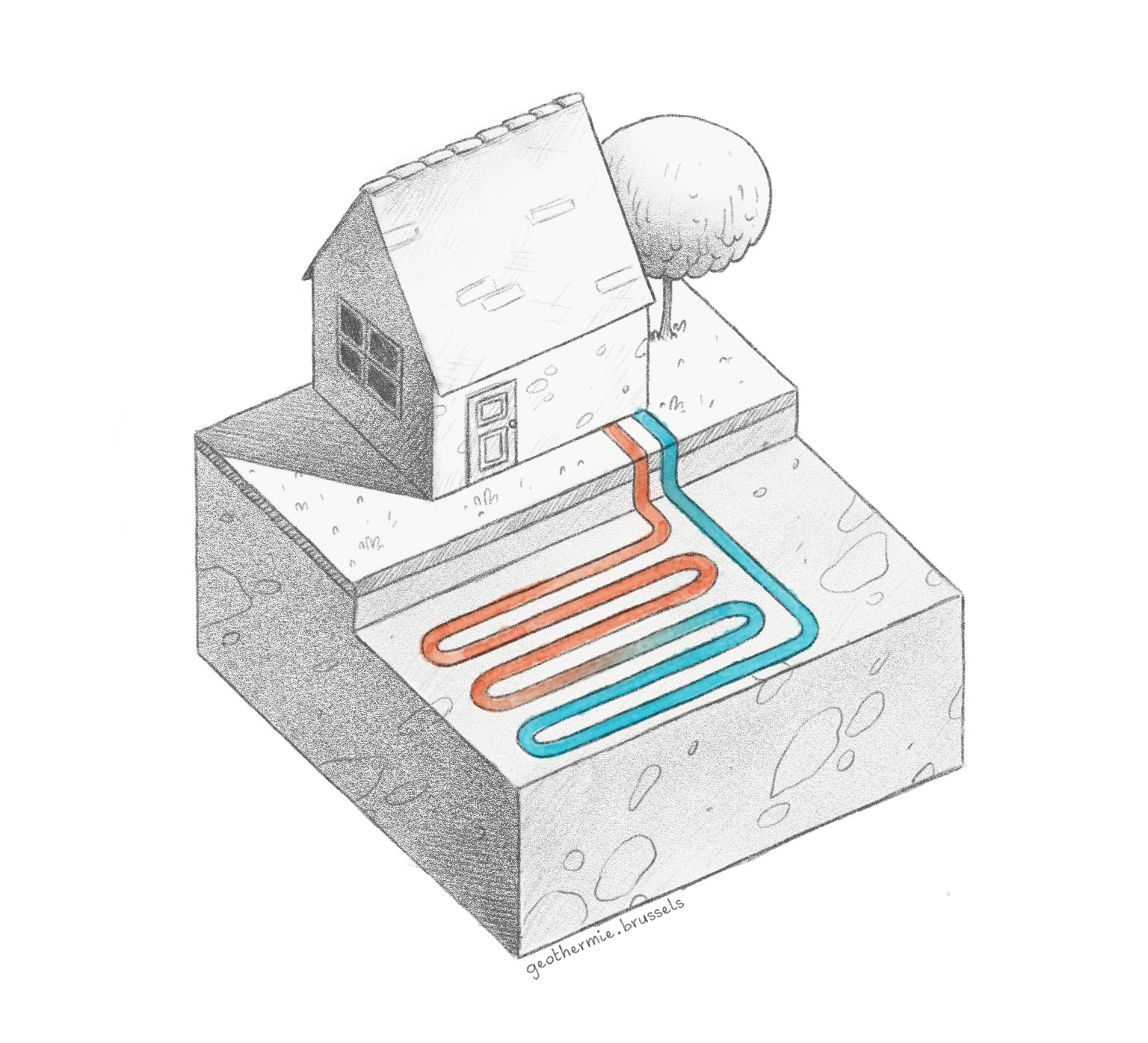Very shallow geothermics
Very shallow geothermics involves capturing the Earth's heat in the first few metres under the surface, using a system of horizontal loops or possibly heat baskets.
Very shallow geothermal systems capture the Earth's heat using a series of pipes installed in the first few metres under the surface. A fluid (generally glycolated water) runs underground through this closed loop, stores heat from the ground, and brings it to the building through a heat pump that feeds a domestic heating system.
Horizontal loop fields are installed at a very shallow depth (1 or 2 metres), and only require digging up the top layer of soil, installing pipes, and refilling the trenches.

Heat baskets can also be installed in trenches 1 to 2 metres deep, and are more compact than horizontal loop fields, requiring less space.

These techniques require little excavation work, but they do have the following drawbacks:
- The system requires considerable surface area (from 28 to 100 m² per kW of heat) without vegetation, as roots could damage the pipes and/or create shade that would prevent solar recharge.
- During the winter, when more heat is needed, the natural temperature of shallow ground is relatively low, which considerably decreases the heat pump's efficiency ratio.
- This system cannot be used for passive cooling (geocooling) in the summer, as the natural temperature of the ground at these depths is too high.
Very shallow geothermics have few benefits compared to an aerothermal heat pump that captures heat from the air, because the temperature of the ground is close to that of the air. Energy efficiency gains are therefore limited, and the system's efficiency varies widely depending on the season.




